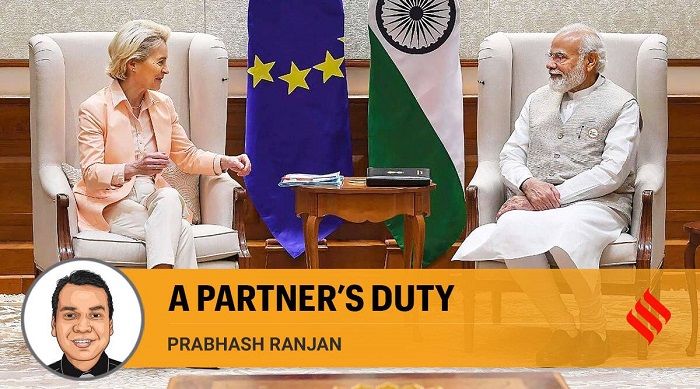
The third round of negotiations of the India-European Union (EU) free trade agreement concluded recently. The two sides are also negotiating an investment protection agreement (IPA), which will contain investment protection standards and an independent mechanism to settle disputes between investors and states under international law.
Notwithstanding the laudable intent of the government to welcome them, foreign investors in India have often got into numerous regulatory troubles with the state. Several foreign corporations like Vodafone, Cairn Energy, Nissan, White Industries, Telenor, Nokia, Vedanta have sued India to enforce the rights guaranteed to them in bilateral investment treaties (BITs). This is the main motivation behind the EU seeking an IPA with India. Arguably, EU investors can rely on Indian law for protection. But Indian law can be unilaterally changed to the detriment of the investor. Moreover, the Indian judiciary is agonisingly slow in resolving disputes. Thus, the longing for protection under international law.
But the road to a successful India-EU IPA is going to be bumpy largely because of India’s inward-looking approach to investment protection under international law as enunciated in India’s 2016 Model BIT. The following differences between the two sides are daunting.
First, India wants to push taxation measures outside the scope of the treaty by making tax-related regulatory measures non-justiciable. The EU has difficulty accepting this proposition given the recent history of India’s tax-related investment disputes with Vodafone, Cairn Energy, and Nissan.
Second, the EU’s investment proposal to India talks of creating a two-tier court-like system with an appellate mechanism and tenured judges to resolve treaty disputes between investors and the state. This proposal is connected to the EU’s stand internationally for creating a multilateral investment court (MIC), negotiations for which are going on at the United Nations Commission on International Trade Law (UNCITRAL). The MIC is aimed at overcoming the weaknesses of the current arbitration-based system of settling investor-state disputes. India’s position on creating an investment-court-like system is unknown.
India hasn’t publicly contributed to the ongoing negotiations at UNCITRAL towards establishing a MIC.
Third, the EU’s investment proposal contains a most favoured nation (MFN) provision to ensure that EU investors do not face discrimination vis-à-vis other foreign investors. On the other hand, India’s position is not to include the MFN provision in its investment treaties because of the apprehension that foreign investors will use the MFN clause to indulge in disruptive treaty shopping. The solution to such disruptive treaty shopping is to negotiate for a qualified MFN provision and not exclude it altogether.
Fourth, the EU investment proposal contains what is known as a fair and equitable treatment (FET) provision, which is missing in the Indian 2016 Model BIT. The FET provision protects foreign investors, for example, by making the states liable if it goes back on the specific assurances made to an investor to induce investments on which the investor relied while making the investment.
A popular yet flawed perception in India is that investment treaties like the India-EU IPA are not needed because foreign investors are anyway thronging Indian shores. Nothing can be further from the truth. According to Arvind Subramanian and Josh Felman, overall FDI to India has stagnated for the past decade at around 2 per cent of the GDP. In the case of the EU, while its share in foreign investment stock in India increased from €63.7 billion in 2017 to €87.3 billion in 2020, this is way below the EU foreign investment stocks in China (€201.2 billion) or Brazil (€263.4 billion). Furthermore, recent research by Simon Hartmann and Rok Spruk shows that India’s decision to unilaterally terminate BITs has negatively impacted FDI inflows to India. Thus, India needs the IPA with the EU to attract FDI for achieving the aspirational milestone of becoming a $10-trillion economy by 2030.
But first, India needs to put its own house in order. India should review the 2016 Model BIT, as has also been recommended by the Parliament’s standing committee on external affairs. Simultaneously, India should evolve a clear position on MIC, and, like the EU, maintain high transparency in negotiations by publicly articulating its position on critical issues.
The writer is Professor and Vice Dean, Jindal Global Law School, O P Jindal Global University. Views are personal (Indian Express)


